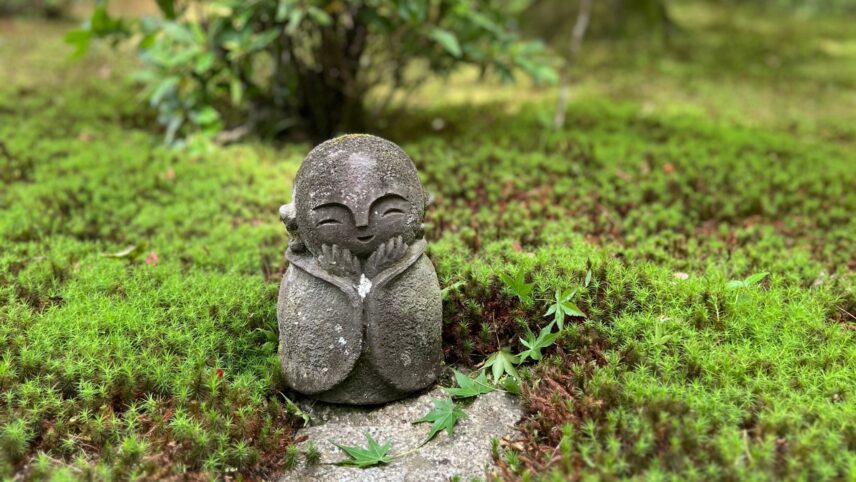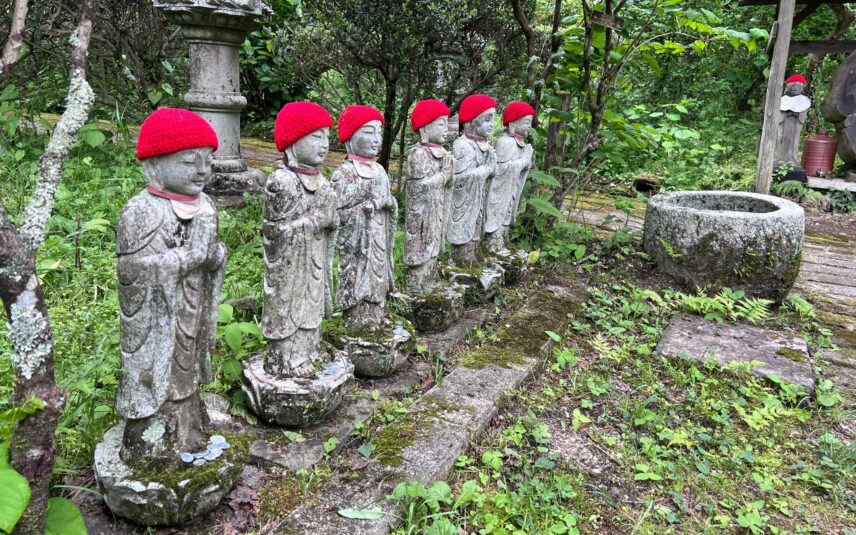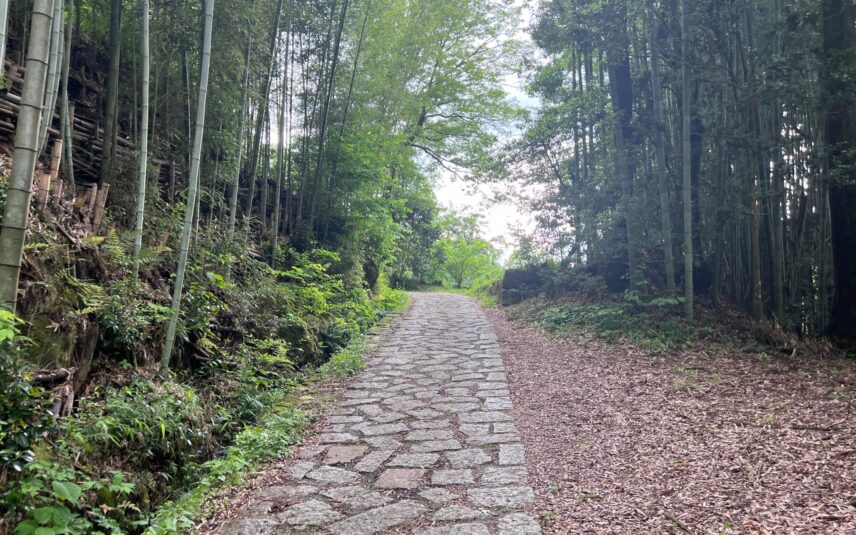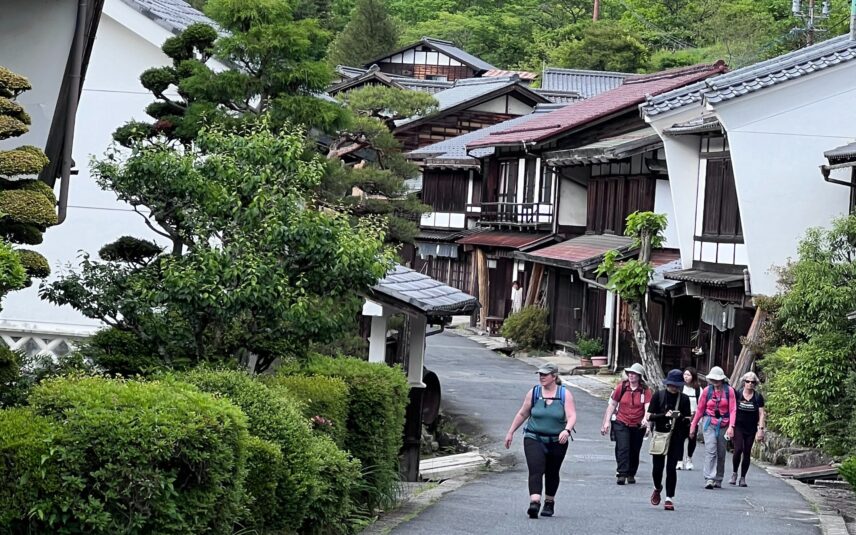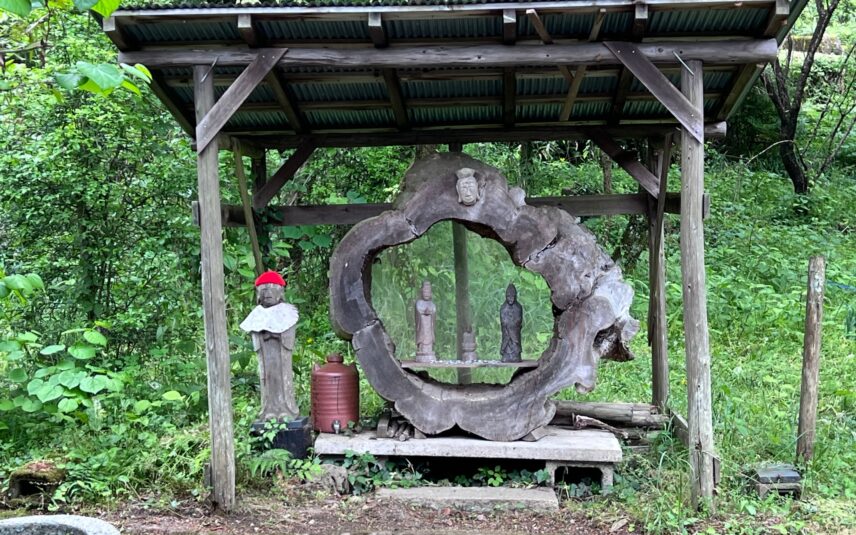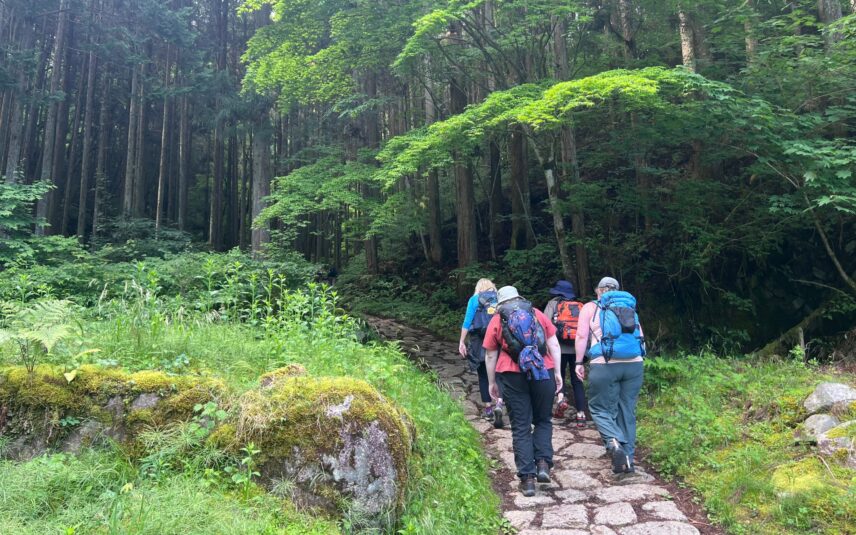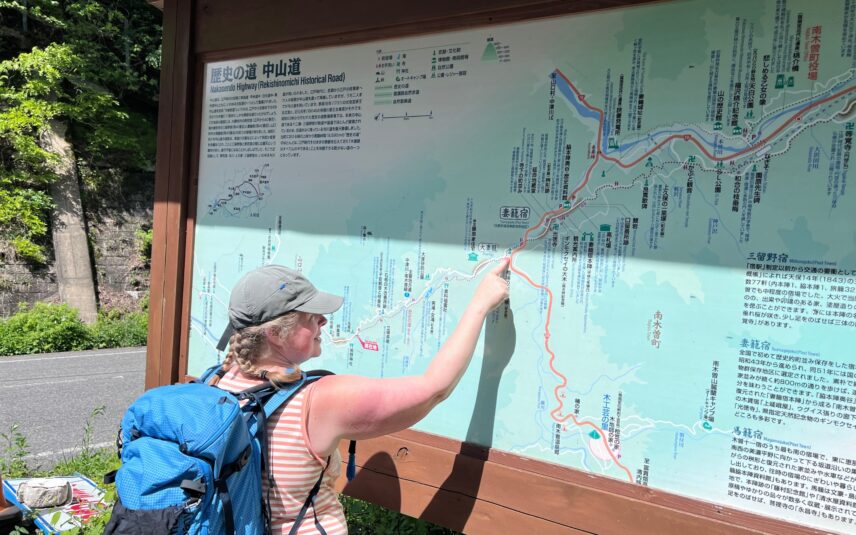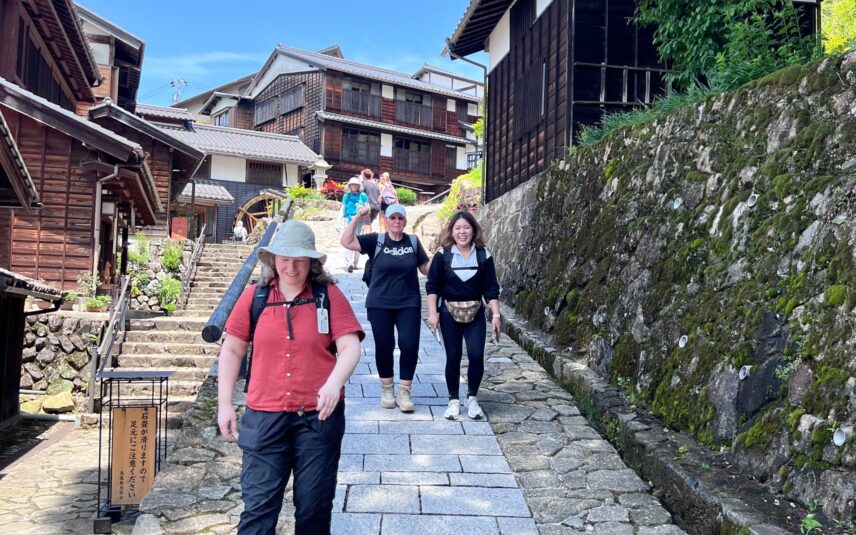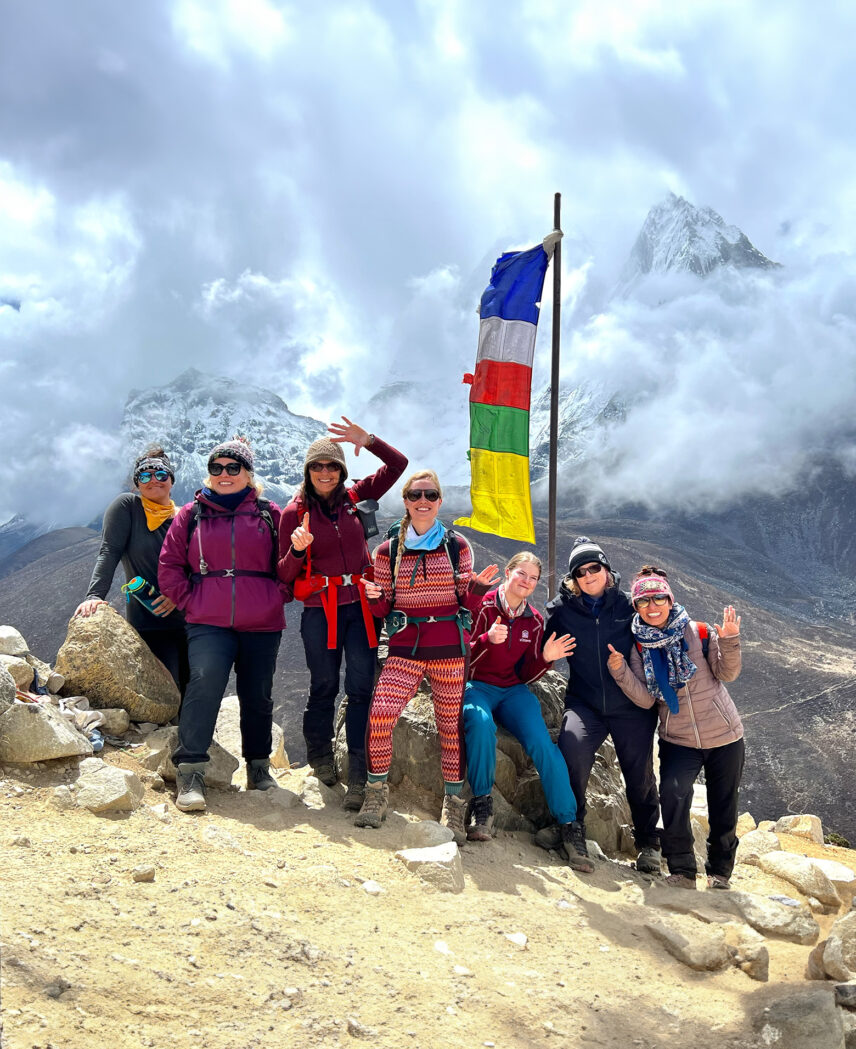When I was fourteen, I was introduced to the concept of Zen meditation, a practice from the Japanese branch of Buddhism, through a spiritual leader in my community. He told me that he couldn’t explain Zen, that you had to experience it.
“Ok, I answered, but what even is the IT that I should seek to experience?” I asked.
His basic instruction only confused me further when he said, “Sit and stare at a wall until it isn’t a wall any more. And continue to stare until it becomes a wall again.” I understand this better now to be a metaphor for how we project our judgements onto objects, and how meditation can help us to diminish those judgements/distractions/misperceptions, but may not erase them entirely. At the time, I just stared at the wall, and kept seeing…a wall!
I learned that Zen masters often speak in koans, which are like puzzles or riddles that have no logical answer, demonstrating the limits of logic and the path to enlightenment.
I took my teenaged self to the main branch of my suburban library to borrow the only book they had with Zen in the title: “The Way of Zen” by Alan Watts. I had only a vaguely more clear understanding of this mysterious Japanese branch of Buddhism after reading the book.
Just as when you hear a word or concept for the first time, I began to see this mysterious word popping up as “Mini Zen Gardens,” a tray of white sand that comes with a miniature rake and a few small stones. Larger ones might contain carefully manicured miniature bonsai trees. Later, it became more mainstream, and we talk about having “zen moments” or being “zenned out.”
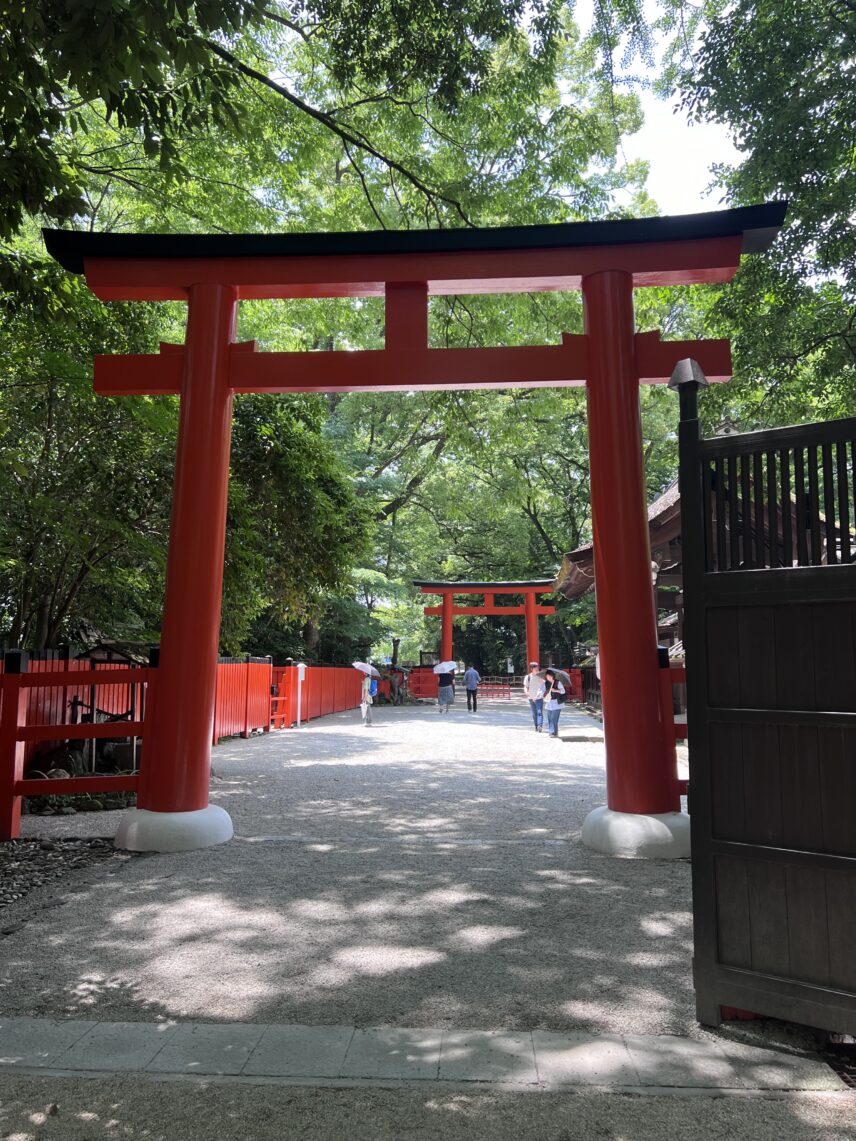
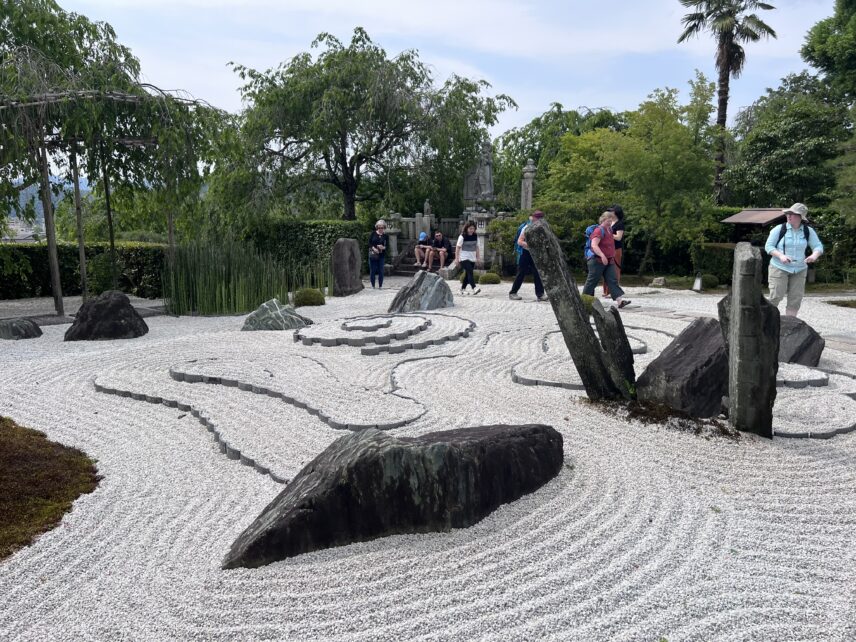
When I enter the Zen garden in Kyoto, during the Sacred Japan trip, I gain a deeper visceral understanding of this mysterious practice that I was introduced to more than forty years before. In the expansive coolness of the forested gardens, I feel the peacefulness present in the simple perfection of the carefully raked pure white gravel, the manicured trees, the koi lazily swimming in the pond, the bridge that spans the babbling creek.
As I sit and contemplate the journey from my introduction to Zen Buddism to the life circumstances that brought me to this garden, I feel a deep sense of inner peace and connection. Here, in the sanctuary of the Zen garden, there is no rushing. Time stretches forward and backward. I appreciate a moment in the shade, a cool stone step to sit on, rest and breathe deeply.
I can trace back all the steps from being intrigued when first learning about Zen buddhism, to learning how to meditate, which led to practicing yoga, several trips to India and owning a yoga studio for almost 20 years. And this moment, in Japan, sitting in the shade of the Zen garden, with bustling Kyoto outside the tranquil grounds, I feel profoundly connected to all the ups and downs of that journey, and see the beauty in it all.
My moments in the garden fill me with deep gratitude for that journey. I feel a renewed sense of energy and decide to walk the 5km back to the hotel with two sisters who have joined the group from Canada, Jen and Susan. We walk along the river back to our hotel.
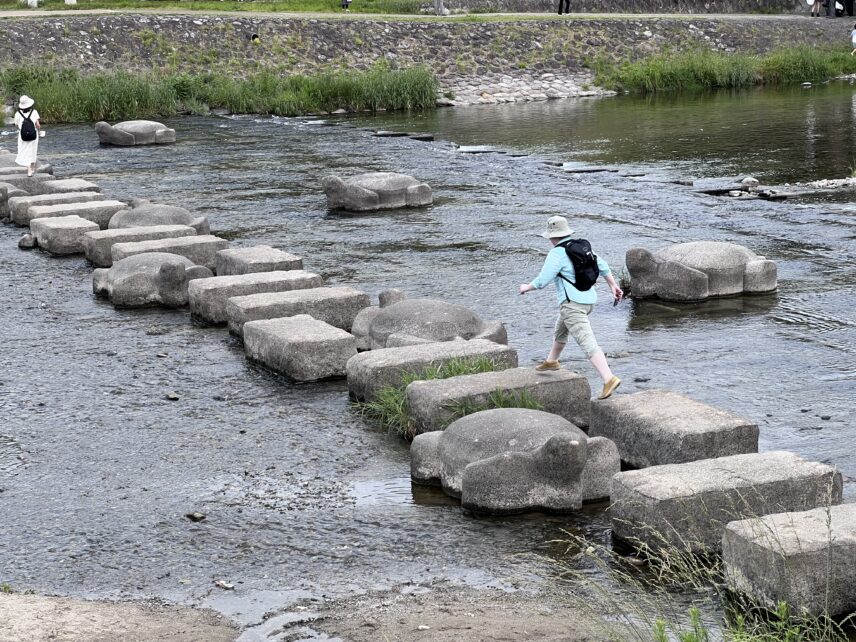
Kyoto is a bustling modern city with a population of about 1.5 million people. Yet, there are many moments and places of refuge, quiet and peacefulness. The Shirakawa River runs through the heart of the city and its grassy banks and trails make a relaxing getaway in the middle of the city. Walking along the shores, we spot a deer in the tall grass between the path and shore, a swath maybe 20 feet wide. Herons bathe in the shallow waters, and a water snake makes its way from the water onto the grassy shore. The very heart of Kyoto is teeming with wildlife, and is a testament to the value that the Japanese place on cleanliness and orderliness. There’s no garbage…anywhere!
The Japanese have a deep sense of order and respect for the processes that help to maintain that order. Rooms are uncluttered, and even speech is more sparse than our North American way. Voices are soft, and emotional outbursts are rare and not well tolerated.
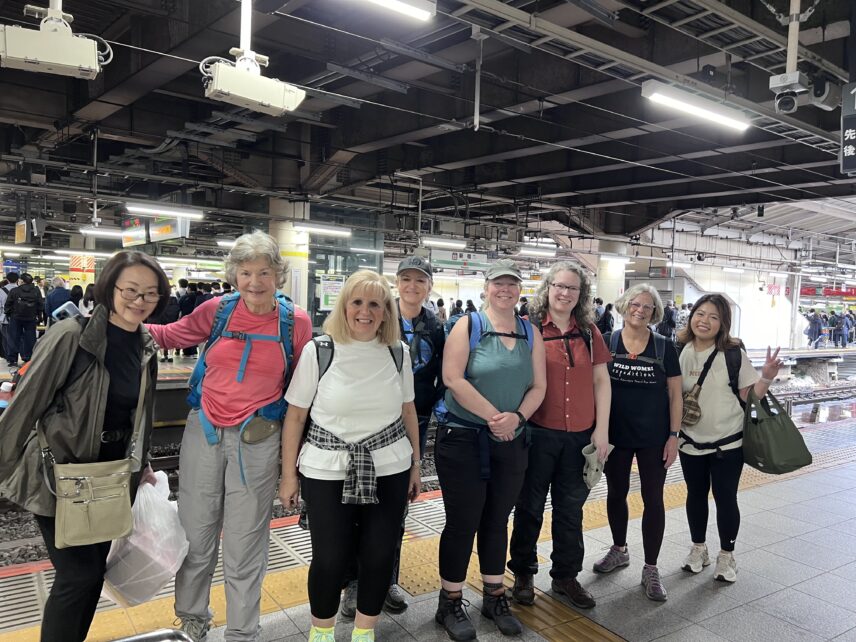
On public transit, there is a hushed, almost reverent atmosphere. Talking on a cell phone is prohibited on any kind of transit and smoking isn’t allowed in the streets. Without other travelers making video calls to their friends and family, or playing noisy video games, or listening to music full blast through headphones that don’t contain most of the sound, traveling in Japan itself is almost a spiritual experience.
One can hear herself breathe, and rest back in comfort as we move from place to place.
When it comes to women in Japan, the behaviors that are most culturally acceptable for women are modesty, tidiness, courtesy, compliance, and self-reliance. Our guides exemplified these qualities, with a warmth and friendliness that came from a deep and resilient core. They marched us from bus to train to hike to meals and accommodations with precision and expertise, navigating the extensive public transit system with ease and grace. It was a blast getting to travel with locals and see the country from the windows of trains, ferries, buses, and of course on foot and by bicycle.
Our group quickly finds our pace, as we set out from Shinjuku station in Tokyo. Our guide, Yuka, tells us that it’s the busiest train station in the world and I’m dumbfounded by the quiet order of the throngs of people as we all make our way to the various platforms to catch the appropriate train.
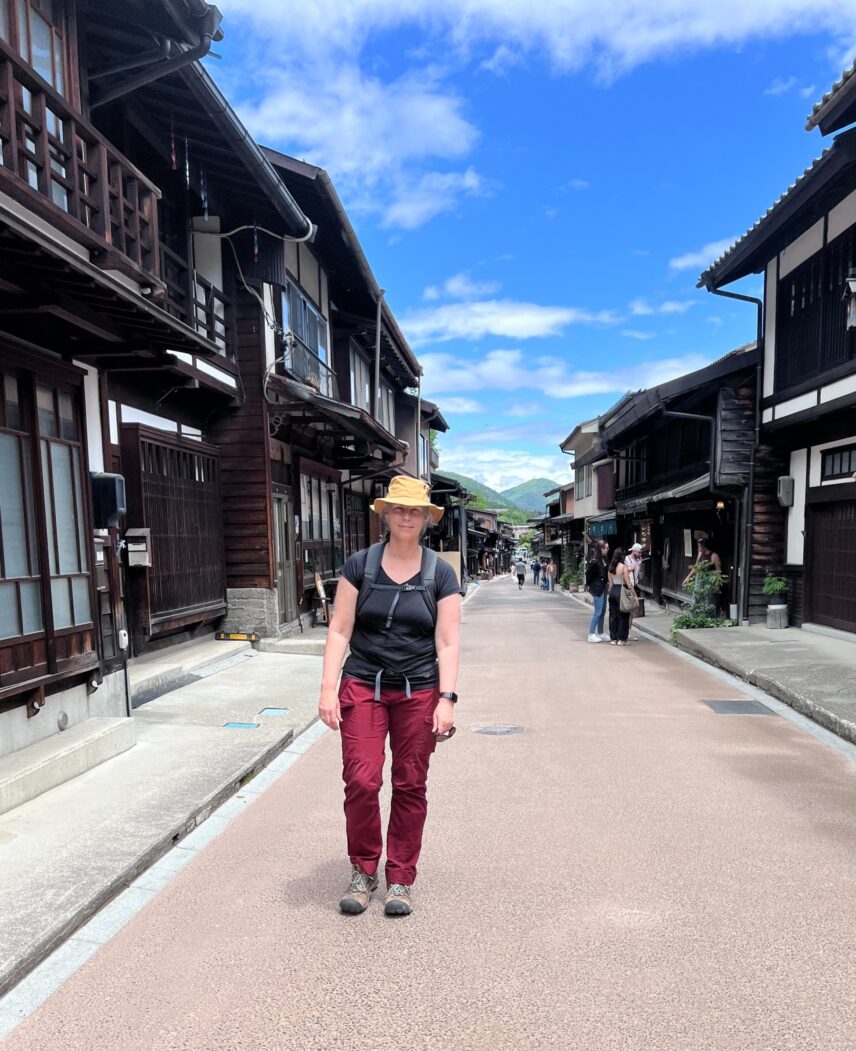
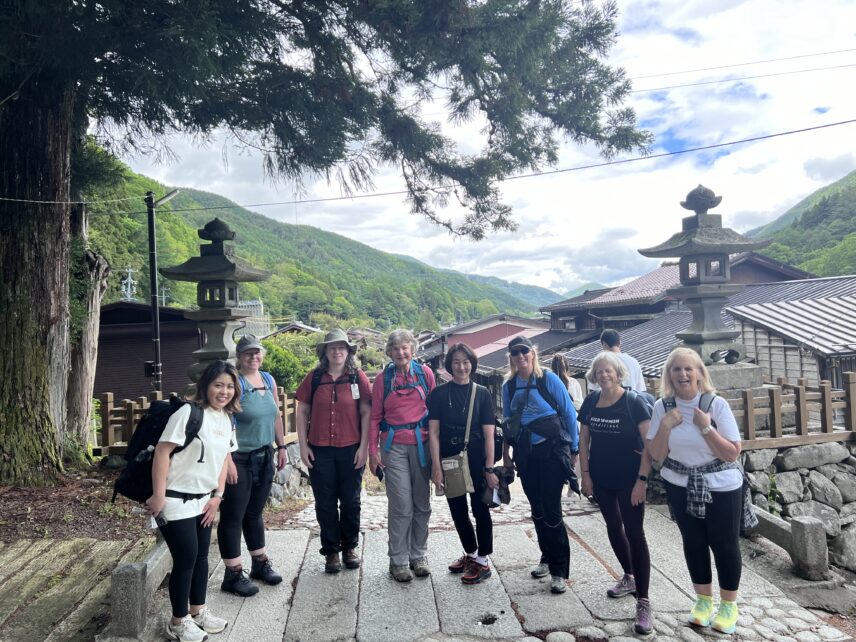
We start out taking a series of trains to Nagiso town where we walk on the historic Nakasendo Samurai trail that unites 69 post stations along a continuous path. We stay overnight in a traditional Japanese inn and enjoy a full traditional Japanese dinner before retiring early for the night, so we can rise bright and early in the morning to continue our hike to Magome.
Walking the Nakasendo Samurai trail is like walking back in time. The complexities of the modern world fall away as we put one foot in front of the other, passing small villages, farms, waterfalls, forests. We stop for tea with a local man who prepares the tea over an open fire in a large shelter. He welcomes travelers along the trail and asks only for a small donation in return. We meet three Japanese women here and share our stories of travel along the trail.
While women have traditionally taken on more background roles in Japan, this trip highlights women taking on non-traditional roles.
On the Oki islands, we meet up with a group of women who have taken up the male-dominated art of Taiko drumming. The four women, all over 70, who lead our group in a drumming session, display an energy and vitality rarely seen in women half their age.
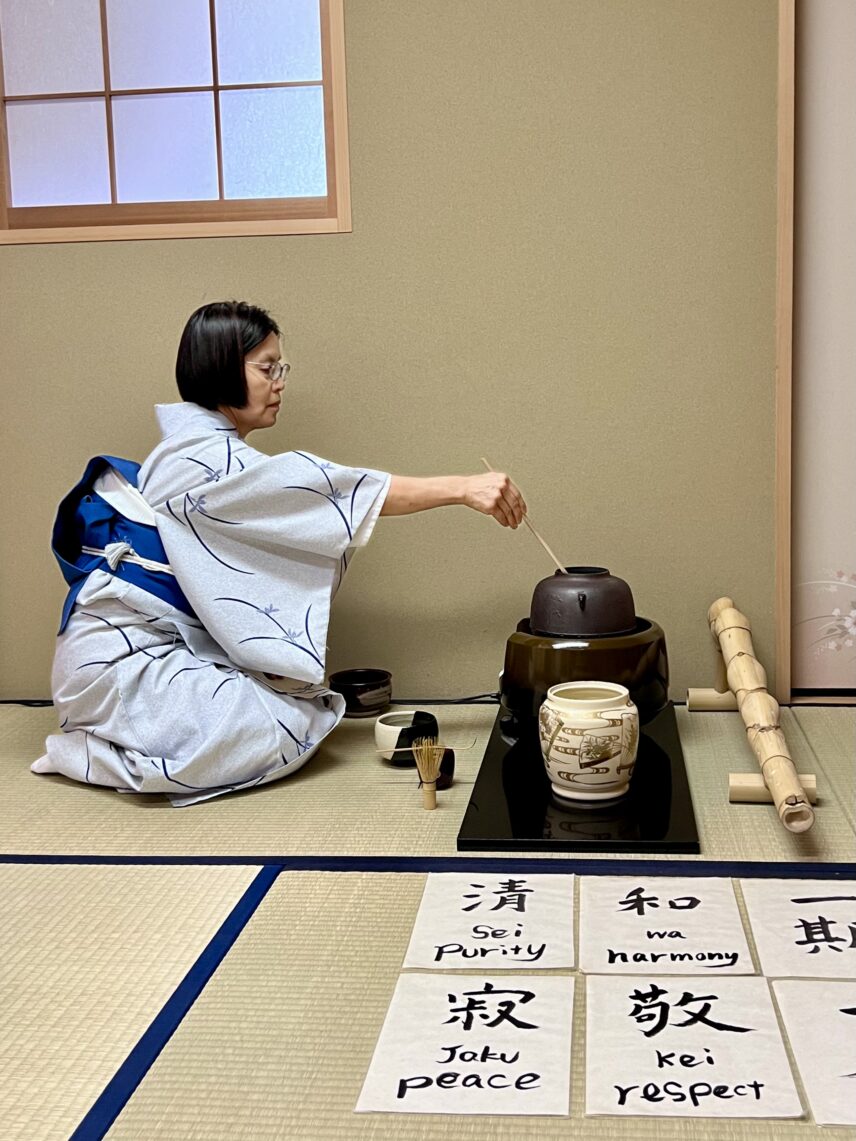
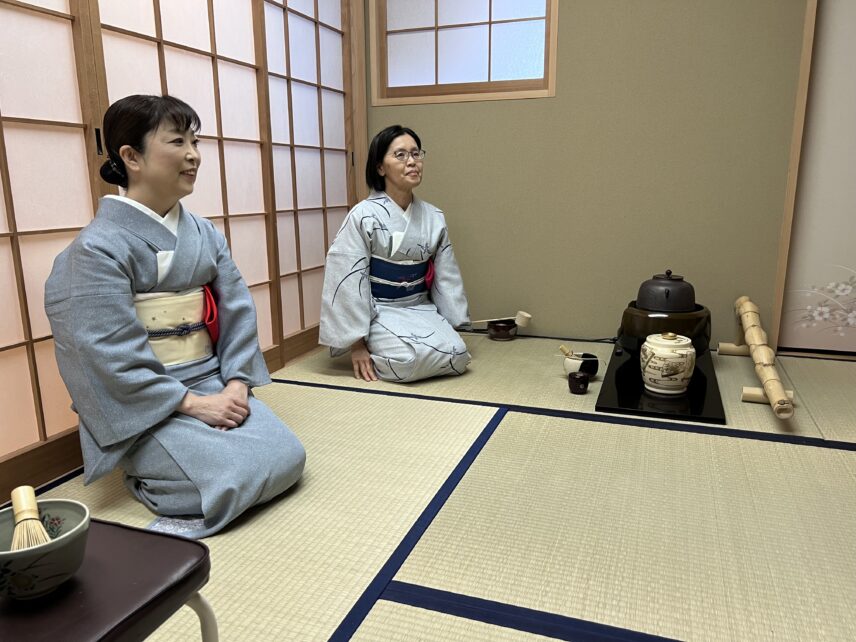
The art of the tea ceremony has also been traditionally in the domain of men, and we’re delighted to be welcomed into a traditional tatami room to be introduced to this ancient art by two women in beautiful crisp kimonos. They share the intricacies of the ceremony and we all take part in making, honoring and drinking the emerald green matcha tea, the delicate ground up new green tea leaves.
We learn about the way of grinding and preparing the tea, the temperature of the water and even how to hold and turn the bowl, and how eating something sweet helps to bring out the flavor of the tea. We learn about the basic tenets of the tea ceremony: purity, harmony, peace and respect, and we notice these principles in practice in much of everyday life in Japan.
Japan, long known for its business prowess, conjures up serious men in dark coloured suits, but on this trip we meet several women totally rocking it with their businesses, from the women-owned and run restaurant that incorporates used tea leaves into their delectable dishes, to a world class female chef at our hotel on the Oki islands. We met a woman potter who was inspired by her husband’s work and started her own pottery business that has been getting worldwide recognition for some of the innovative work she’s doing with pigments.
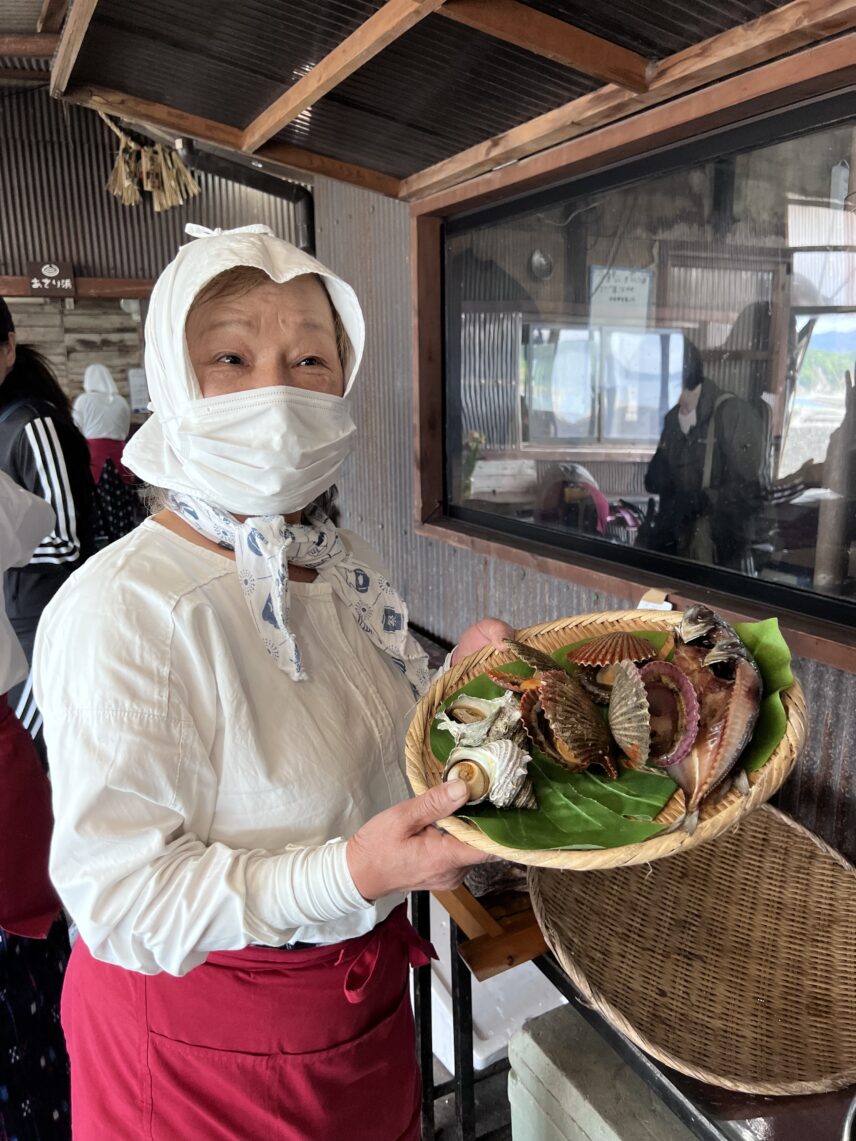
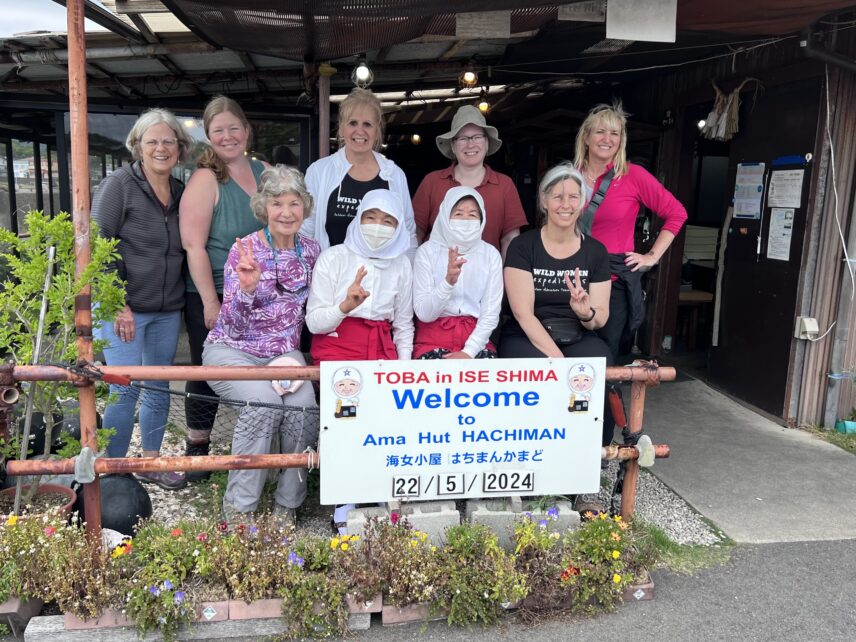
While much of Japan’s business has been dominated by men in history, one notable exception is with the Ama divers, who freedive off Japan’s shore for seafood, and have done so for more than a thousand years, starting as young as 12 years old and often diving well into their seventies. While this is an honorable tradition for women, it’s also extremely demanding and hard work. The retired Ama divers we met were up to 90 years old. They cooked for us and then danced with us, with incredible vitality.
Everywhere around me in Japan, I feel the influence of Zen Buddhism. In the orderliness the friendliness and the deep reverence for nature and each other. Along with the Zen garden in Kyoto, many of our accommodations held that same kind of peaceful and comfortable space. We even stayed in a guest house run by monks, who served us the most delicious and intricate Japanese style vegan meal I’ve ever experienced. Our night there was accompanied by strong winds that made the old building rattle and sway, but somehow that only added to the charming atmosphere of being held in the arms of the surrounding forest.
The people of Japan also seem to embody the qualities that are deeply steeped in the traditions of Zen Buddhism, such as being slow and deliberate in actions, creating space, honoring rituals and doing only one thing at a time.
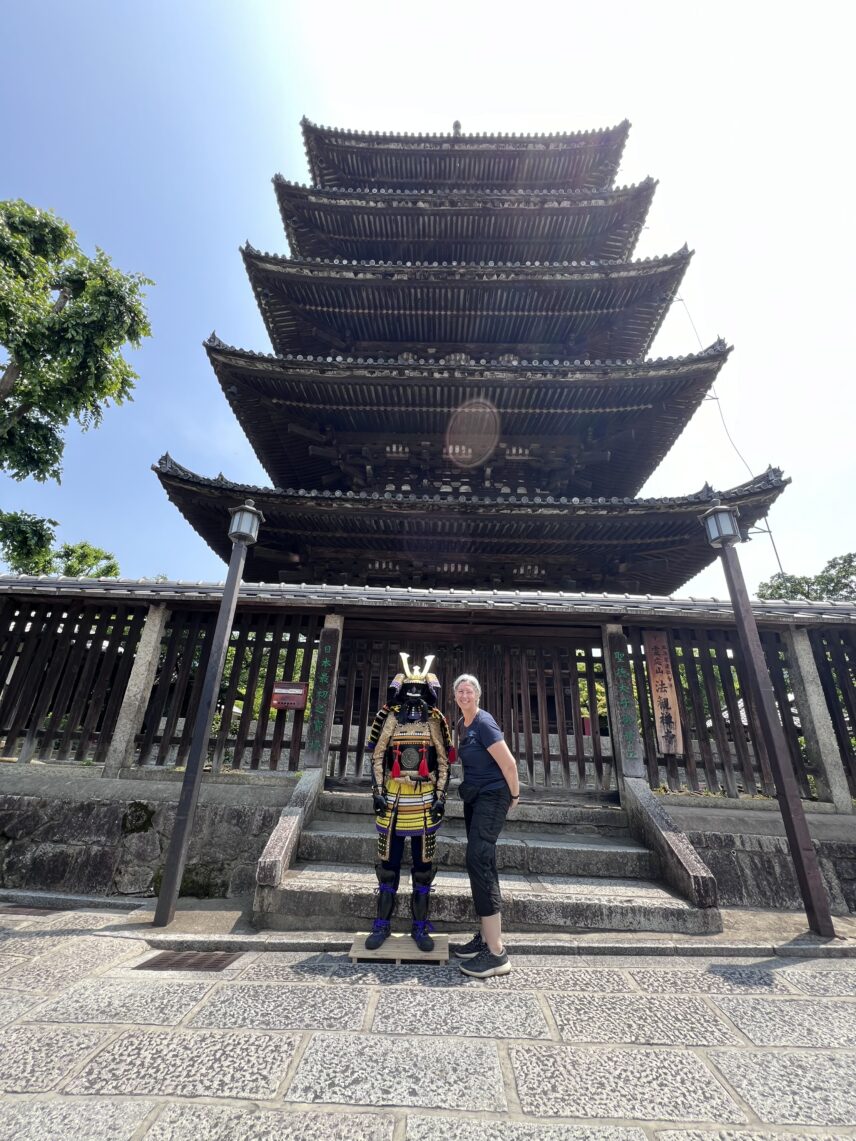
Forty years ago, a spiritual teacher told me that you can’t understand Zen without experiencing it. After my recent trip to Japan, I still can’t say that I fully understand Zen Buddhism with its main goal of satori (enlightenment), but I’m grateful to have been immersed in a culture that lives every day under the guiding principles that create the conditions for this kind of spiritual awakening, and to feel the kind of peace and ease of living in this way, even if just for a couple of weeks.
Back in North America, I’m bombarded with noise and disorder, navigating the airport and transit systems. Other travelers speak loudly on their phones, having video calls with friends or relatives, listening to music, playing games, eating food and leaving their garbage behind. I know that I’ll soon find this way of life to be normal again, but for now, I’m holding onto the peace and tranquility that filled me up in the Zen garden and the many other temples and shrines that we visited on this incredible journey through Sacred Japan.
